|
|
Research Progress on Hierarchically Porous Zeolites: Structural Control, Synthesis and Catalytic Applications
CHEN Hang-Rong, ZHOU Xiao-Xia, SHI Jian-Lin
2018 Vol. 33 (2): 113–128
 Abstract
Abstract(
1670 )
 HTML
HTML(
47)
 PDF
PDF(2297KB)(
2157
)
Zeolite has an excellent ion-exchange property, rich acid sites and good structure and catalysis stability. Therefore, it has been widely used in many fields, i.e., industrial catalysis, separation and adsorption, etc. However, the application of zeolite is greatly limited in many catalytic reactions involved in the large molecules due to its smaller micropore size (< 1.5 nm). The introduction of hierarchically porous structure into conventional zeolite crystals not only keeps their crystalline framework, acidic active sites and high thermal and hydrothermal stability, but also accelerates the diffusion/transfer of larger molecules and greatly decreases the formation of carbon residue, thus prolonging the catalyst life, which enables them more popular applications in the catalytic field. Herein, the recent research progresses of the control of pore structural, the synthesis strategy and mechanism of some typical kinds of hierarchically porous zeolites, including disordered mesoporous/macroporous structure, ordered mesoporous/macroporous structure, dual mesopore structure with certain orientation, hollow structure and macroporous-mesoporous-microporous structure, etc, are concluded. In addition, the application progresses of these hierarchically porous zeolites in catalytic fields are summarized. Compared with the conventional zeolites and amorphous mesopore materials, the novel hierarchically porous zeolites show more excellent catalytic performance due to the crystalline framework and the introduce of hierarchically pore structure. Finally, an outlook for the hierarchically porous zeolite promising development in the future is put forward.
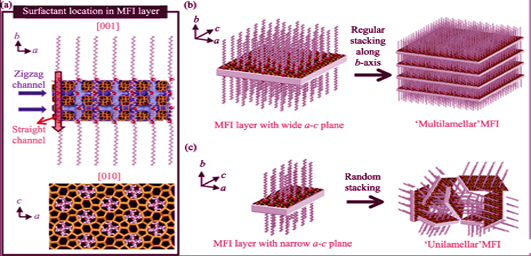
|
|
|
Progress in Activated-synthesis of Si-based Oxynitrides
Materials at Low Temperatures
LIU Qian, ZHOU Zhen-Zhen
2018 Vol. 33 (2): 129–137
 Abstract
Abstract(
856 )
 HTML
HTML(
20)
 PDF
PDF(1229KB)(
1465
)
Si-based oxynitride is an important type of structure/function integrated materials and has got wide applications in the fields of wear resistance, corrosion resistance, high speed cutting, pressure sealing, phosphors host, alkaline catalysis, and so on. The preparation of Si-based oxynitrides powders has undergone different development stages: high temperature solid state reaction (SSR), self-propagating high temperature synthesis (SHS), carbothermal reduction and nitridation (CRN), wet-chemical route combined with CRN, and others, presenting a sustained development trend. In this paper, the research progress in the activated-synthesis of Si-based oxynitrides powders and fibers at low calcination temperatures is reviewed over the past ten years, mainly focusing on the carbothermal reduction nitridation at micro-nano scale based on mesoporous template assembly as well as SiC reduction assisted Sol-Gel nitridation method. The development trend and applications of the low temperature activated-synthesis of Si-based oxynitrides materials are also prospected.
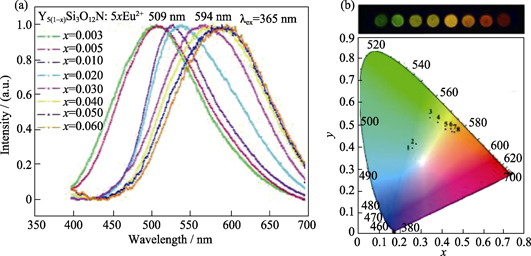
|
|
|
Graphene Based Oxide Ceramic Composites with High Mechanical and Functional Performance: from Preparation to Property
FAN Yu-Chi, WANG Lian-Jun, JIANG Wan
2018 Vol. 33 (2): 138–146
 Abstract
Abstract(
1134 )
 HTML
HTML(
44)
 PDF
PDF(703KB)(
1836
)
It is of great importance to enhance the performance of oxide ceramic composite for fulfilling the increasing requirements from modern society. To this end, graphene is very suitable to be exploited as reinforcement for achieving superior performance in oxide ceramic composites, due to its extraordinary mechanical and electrical properties. In this review, the study of graphene based oxide ceramic composite including the processing, densification, microstructure and properties, based on the reports and researches in the past decade. It can be seen that: (1) the incorporation of graphene can generally improve the strength, fracture toughness and strain tolerance of oxide ceramic composite; (2) for the electrical performance, the graphene/oxide ceramic composites show not only low percolation threshold and high electrical conductivity, but also tunable charge carrier type which can be controlled by the oxygen concentration in oxide matrix. Therefore, it is believed that the graphene based oxide ceramic composites are very promising material for the application requiring both advanced mechanical and functional properties.
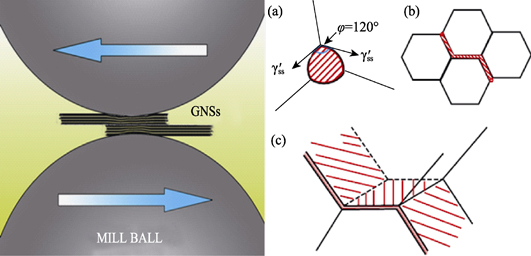
|
|
|
Correlation of Intergranular Amorphous Structures on Multi-levelled Phase Relationship in Sialon Ceramics: Retrospect and Prospect
GU Hui
2018 Vol. 33 (2): 147–152
 Abstract
Abstract(
852 )
 HTML
HTML(
9)
 PDF
PDF(911KB)(
1167
)
Phase diagram in Sialon ceramics and intergranular amorphous films in Si3N4 ceramics, are two successful aspects for fundamental studies in ceramic as an independent discipline. Although differing only in secondary compositions, the small gap in stoichiometry between the two systems divides structure, scale and scope in ceramic research. Started from this century, a series of analytical TEM methodology to probe into local composition within individual grains and even inside grain-boundaries have been developed. This provides the possibility to unify the phase diagram and intergranular structure in Sialon ceramics, especially for them to connect and correlate into a multi-levelled structure framework, which can develop not only an alternative approach to study phase transformation, but also a hierarchical structure-property relationship that serves the full-life circle of ceramic materials.
|
|
|
Recent Progress of Porous PZT95/5 Ferroelectric Ceramics
NIE Heng-Chang, WANG Yong-Ling, HE Hong-Liang, WANG Gen-Shui, DONG Xian-Lin
2018 Vol. 33 (2): 153–161
 Abstract
Abstract(
1173 )
 HTML
HTML(
26)
 PDF
PDF(1151KB)(
1702
)
Explosive pulsed powers (EPP) based on the shock-compression-induced depolarization effect of ferroelectric or piezoelectric ceramics are found important applications in the area of high pulsed power supplies. A particular lead titanate-lead zircaonate (PZT) solid solution with a Zr : Ti ratio of 95 : 5, denoted by PZT95/5, was identified as a promising material for this application. Recently, porous PZT95/5 ferroelectric ceramics are attracting more attention due to their enhanced performance under shock compression. In this article, progress of porous PZT95/5 ferroelectric ceramics in the past decades were reviewed. The dependence of porous microstructures, such as porosity, pore size and morphorlogy, pore distribution on the property were emphasized. Porous PZT95/5 ferroelectric ceramics with specific porous microstructure was found exhibiting superior performance under shock wave compression. Theoretical and experimental results found the mesoscopic mechanism for porous PZT95/5 ferroelectric ceramics to exhibit excellent shock damage resistance. In the final section, new ferroelectric candidates, such as BNT-based ferroelectric ceramics and PIN-PMN single crystal, for EPP application were also reviewed and prospective research work in the future is proposed.
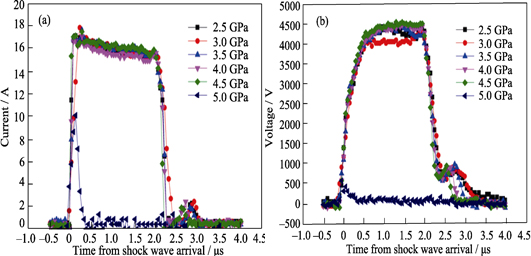
|
|
|
A New Kind of Fire-resistant Inorganic Paper
DONG Li-Ying, ZHANG Yong-Gang, ZHU Ying-Jie
2018 Vol. 33 (2): 162–172
 Abstract
Abstract(
1287 )
 HTML
HTML(
21)
 PDF
PDF(1060KB)(
1779
)
A new kind of highly flexible fire-resistant inorganic paper made from ultralong hydroxyapatite nanowires is reviewed. The fire-resistant inorganic paper exhibits high flexibility, high biocompatibility, nonflammability, high thermal stability, and excellent mechanical properties, which can be used for writing and printing, and is promising for permanent and safe storage of information, such as archives and important documents. The preparation process of this new kind of fire-resistant inorganic paper is environmentally friendly. The fire-resistant inorganic paper has many other potential applications in various fields. This new kind of fire-resistant inorganic paper provides a promising perspective for a possible substitute for the traditional cellulose paper, which has caused serious natural resource and environmental problems. In this review, we introduce the recent progress made in the research of this new kind of fire-resistant inorganic paper. Various kinds of fire-resistant paper sheets made from ultralong hydroxyapatite nanowires with different functions and applications are reviewed, including fire-resistant paper, superhydrophobic fire-resistant paper, antibacterial fire-resistant paper, photoluminescent fire-resistant paper, biomedical test paper, biopaper, refractory protection layer of the fiber-optic cable, and high-efficient filtration paper.
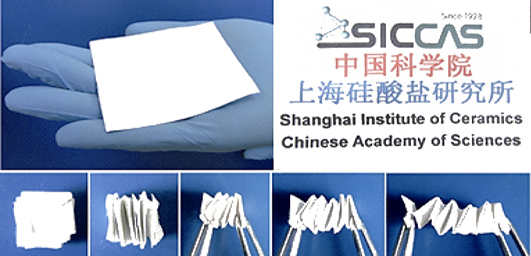
|
|
|
Visible Light Responsive Metal Oxide Photoanodes for Photoelectrochemical Water Splitting: a Comprehensive Review on Rational Materials Design
WANG Song-Can, TANG Feng-Qiu, WANG Lian-Zhou
2018 Vol. 33 (2): 173–197
 Abstract
Abstract(
2549 )
 HTML
HTML(
80)
 PDF
PDF(2464KB)(
3141
)
Photoelectrochemical (PEC) water splitting provides a “green” approach for hydrogen production. Photoanodes for water oxidation reactions are the bottleneck for PEC water splitting due to the involved thermodynamic and kinetic challenges. To obtain the target of 10% solar-to-hydrogen (STH) efficiency toward practical applications, efficient photoanodes should be developed. Owing to the intrinsic advantages of low cost, good light harvesting, low toxicity, and excellent (photo)-electrochemical stability, visible light responsive metal oxides such as WO3, α-Fe2O3 and BiVO4 have attracted great attention for potential photoanodes and significant achievements have been made in the past decades. In this review, the sate-of-the-art progresses of WO3, α-Fe2O3 and BiVO4 photoanodes are summarized with an emphasis on the rational materials design toward efficient PEC water splitting. Moreover, their applications in unassisted PEC water splitting systems are briefly introduced. The perspectives on the challenges and future development of visible light responsive metal oxide photoanodes are presented.
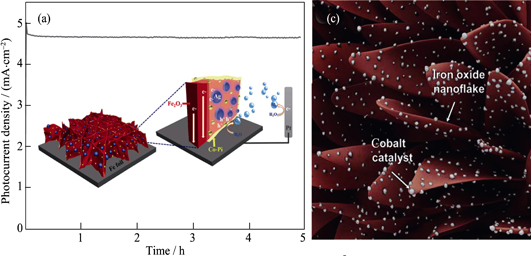
|
|
|
Development Overview of Refractory Materials
LI Hong-Xia
2018 Vol. 33 (2): 198–205
 Abstract
Abstract(
1075 )
 HTML
HTML(
34)
 PDF
PDF(1020KB)(
1979
)
In this paper, current situation of refractory industry in China is introduced briefly. Developing tendency of refractory materials is remarked based on the technical development of high temperature industries. Advanced refractory materials, characterized by long service life, functionalization, lightweight and ecological-friendly design, play very important roles in sustainable development of high temperature industries. Since the key service properties of advanced refractories constrain each other in traditional material design and fabrication, new design methods are developed to optimize the key service properties simultaneously. Combined with the development of new insulating materials, and functional refractories used in steel-making industry, structure-function combining design concept and new fabrication technologies are introduced by applying FEM analysis, bridging of advance ceramic technologies, and multilayered/gradient composite structure.
|
|
|
Electrocatalytic Performance of Palladium Nanoparticle Supported by Two-dimensional Titanium Carbide-CNT Composites
ZHANG Xin, ZHANG Jian-Feng, YANG Shui-Xian, CAO Hui-Yang, HUANG Hua-Jie, JIANG Wan
2018 Vol. 33 (2): 206–212
 Abstract
Abstract(
1095 )
 HTML
HTML(
16)
 PDF
PDF(997KB)(
1459
)
To improve the layer spacing and the electrocatalytic performance of Ti3C2, the carbon nanotubes (CNTs) was utilized to tailor the microstructure. Layered Ti3C2, obtained by etching Ti3AlC2 with HF, hydroxylated carbon nanotubes (CNTs) and potassium tetrachloropalladate (K2PdCl4) were used to synthesize Pd naoparticles supported on Ti3C2-CNT (Pd/Ti3C2-CNT) catalyst through ultrasonic dispersion and solvothermal method. XRD, FE-SEM and XPS were adopted to investigate the effect of CNT on the microstructural tailoring of Ti3C2 interlayers. The electrocatalytic performance of Pd/ Ti3C2-CNT catalysts for both formic acid and methanol in acidic and alkaline solutions, were investigated by cyclic voltammetry, chronoamperometry, and AC impedance spectroscopy, respectively. The results validated that the intercalation of CNTs into Ti3C2 interlayers, whose “bridge” effects benefit the electron transportation in the catalysts, and thus the electrocatalytic performance of Pd/Ti3C2-CNT was elevated.
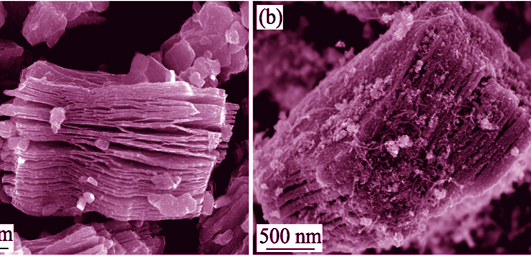
|
|
|
Fabrication of Tungsten Carbide Nanoparticle-encased Graphite-like Mesoporous Carbon as a Precious Metal-free Electrocatalyst for Oxygen Reduction
CUI Xiang-Zhi, ZHANG Lin-Lin, ZENG Li-Ming, ZHANG Xiao-Hua, CHEN Hang-Rong, SHI Jian-Lin
2018 Vol. 33 (2): 213–220
 Abstract
Abstract(
1085 )
 HTML
HTML(
17)
 PDF
PDF(1130KB)(
1420
)
Tungsten carbide nanoparticle-encased graphite-like mesoporous carbon (WC/MG), as a precious metal- free cathode catalyst for oxygen reduction reaction, was successfully synthesized by a template replicating-assisted chemical vapor deposition (CVD) method. The obtained mesostructured WC/MG composite possesses high oxygen reduction reaction catalytic activity and stable electrochemical property. In O2-staturated 0.1 mol/L KOH solution, the half-wave potential (E1/2) and limiting current density of the sample WC/MG-900 annealed at 900℃ were only 50 mV and 0.2 mA/cm2 lower than those of commercial Pt/C catalyst, respectively. Koutecky-Levich (K-L) plots and rotating ring-disk electrode (RDE) measurements indicated that the mesostructured WC/MG exhibited an approximate 4 e- transfer pathway during the ORR process. The comparable ORR performance to Pt/C, long-lived electrochemical stability and excellent methanol tolerance make the synthesized mesostructured WC/MG composite a potential electrode catalyst in oxygen reduction reaction.
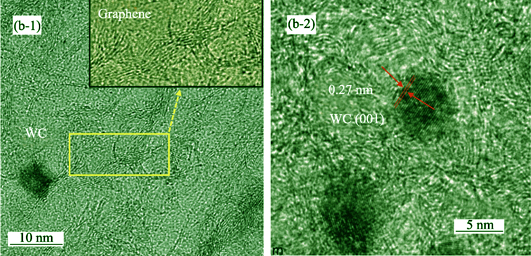
|
|
|
Controlled Synthesis of Gold-based Magnetic Nanocomposites and Their Catalytic Performance
LI Yong-Sheng, CHEN Ling
2018 Vol. 33 (2): 221–228
 Abstract
Abstract(
1216 )
 HTML
HTML(
14)
 PDF
PDF(1032KB)(
1425
)
With the rapid development of nanocatalysts, gold-based nanocomposites have attracted more and more attention due to their excellent catalytic capability. In this study, a novel kind of gold-based magnetic nanocomposite with uniform size, high dispersity, magnetic separability, highly catalytic efficiency, and stability was facilely fabricated via a controllable in-situ reducing approach. Firstly, magnetic nanocomposites were synthesized through coating 100 nm-sized hydrophobic Fe3O4 nanoparticles with organosilica shell formed by the hydrolysis of mercaptopropyltriethoxysilane (MPTES). Then, size-controllable gold nanoparticles (2 nm or 6 nm) formed via in situ reduction was anchored onto the organosilica shell via Au-S covalent bonding, so that gold-based magnetic nanocomposites consisted of Fe3O4 nanoparticles as core and gold nanoparticles decorated organosilica as shell were obtained. Various techniques, such as Transmission Electron Microscope (TEM), Dynamic Light Scattering (DLS) and Vibrating Sample Magnetometer (VSM) were employed to characterize the as-synthesized samples. It is demonstrated that the as-prepared nanocomposite is highly-dispersed, core-shell structured and superparamagnetic with diameter of ~150 nm. The saturation magnetization was measured to be 32.1 Am2/kg. Furthermore, the turnover frequency (TOF) of MCN-Au (2 nm) is calculated to be 70 s-1 towards the catalytic reduction of 4-nitrophenol (4-NP) to 4-aminophenol (4-AP). More importantly, the conversion rate maintains 98% after 5 cycling usage, verifying its highly catalytic capability and reusability.
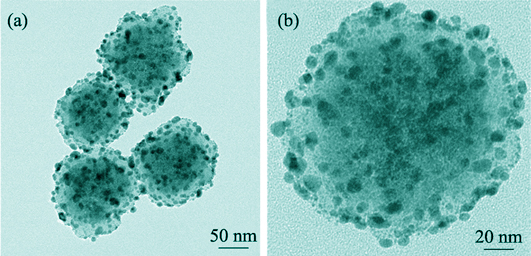
|
|
|
SO2 Non-equilibrium Gas Sensor Based on Na3Zr2Si2PO12 Solid Electrolyte
LI Qiang, SHI Wan-Yan, ZHANG Chen, JIANG Dan-Yu
2018 Vol. 33 (2): 229–236
 Abstract
Abstract(
756 )
 HTML
HTML(
4)
 PDF
PDF(827KB)(
1030
)
This paper reported fabrication and sensing properties of solid-state gas electrochemical sensors for sulfur dioxide based on a non-equilibrium working mechanism. Based on Na3Zr2Si2PO12(NASICON) solid electrolyte, SO2 non-equilibrium gas sensors were fabricated by using Na2SO4-BaSO4 mixture and NaRe(SO4)2 as sensing electrodes. The results showed that there was a good linear relationship between the logarithm of SO2 gas concentration and the sensor output electric potential value. Working at low temperature of 260℃, the sensors display best performances, with sensitivity up to 160 mV/decade and 136 mV/decade. Furthermore, the devices has good repeatability and stability. AC impedance of the sensors in different concentrations of SO2 gas reveals that the electrochemical activity at three phase boundary (TPB) rised with the increased SO2 concentration. Working temperature of the prepared sensor is obviously decreased which is benefited from the high Na+ conductivity of NASICON at low temperature. The sensor possesses good stability and repeatability due to its high chemical stability of Na2SO4-BaSO4 mixture and NaRe(SO4)2 as sensing materials. The sensor based on non-equilibrium mechanism has many advantages, such as low-cost and simple structure. Owing to the above features, the sensor can be possibly applied in the environment monitoring of SO2.
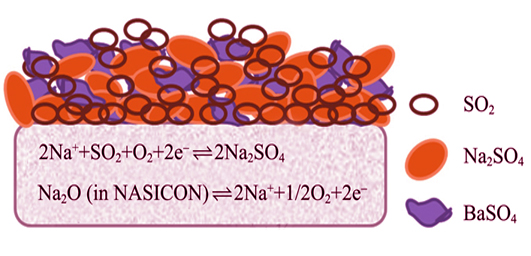
|
|
|
Fabrication and Luminescent Property of Polycrystalline Cerium-doped Lutetium Oxyorthsilicate Scintillation Ceramics
FAN Ling-Cong, SHI Ying, XIE Jian-Jun
2018 Vol. 33 (2): 237–244
 Abstract
Abstract(
598 )
 HTML
HTML(
4)
 PDF
PDF(917KB)(
1159
)
Fabrication processing of cerium-doped lutetium oxyorthsilicate (Lu2SiO5:Ce3+, LSO:Ce) scintillation materials was systematically investigated in this article. Spherical LSO:Ce precursor powder was fabricated through spray drying from the synthetic LSO:Ce precursor sol. Single-phased LSO:Ce spherical powders with A-type and B-type crystal structure were achieved under the calcining temperature of 1000℃ and 1100℃ starting from the spherical LSO:Ce precursor powder, respectively. The LSO:Ce powders with the diameter of about 2 μm are solid spherical granules, which are assembled from a set of nano-sized grains. The LSO:Ce ceramics with the average grain size of 1.3 μm were sintered by spark plasma sintering (SPS) under sintering temperature of 1200℃ and the applied pressure of 80 MPa starting from fabricated A-type LSO:Ce spherical powder. Relative density of the sintered LSO:Ce ceramics can be attained to 99.7%. The pressureless sintered ceramics with relative density of 98.6% was obtained through pressureless sintering at 1650℃ for 4 h in air starting from the green compact dry-pressured from an A-type LSO:Ce spherical powder. The average grain size of the pressureless sintered ceramics is 1.6 μm. After HIPing at 1650℃ under an argon atmosphere for 1 h, a translucent LSO:Ce ceramics with clear grain boundary was achieved. The relative density of the HIPed ceramics is 99.9% and its average grain size is 1.7 μm. The light yield of the HIPed LSO:Ce ceramics reaches 28600 photons/MeV and its luminescence decay time is 25 ns.
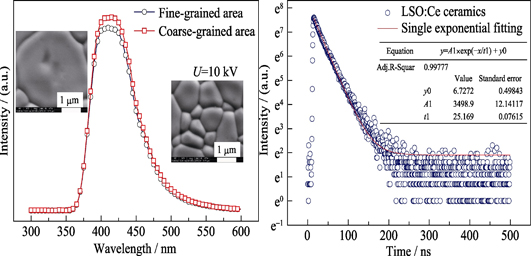
|
|
|
Structural Effect of TiO2 on the Performance of MAPbBr3 Solar Cells
ZHANG Min, WANG Zeng-Hua, ZHENG Xiao-Jia, ZHANG Wen-Hua
2018 Vol. 33 (2): 245–250
 Abstract
Abstract(
861 )
 HTML
HTML(
23)
 PDF
PDF(1092KB)(
1395
)
TiO2 is frequently used as electron transport layer in perovskite solar cells, and its structure can directly affect the performance of MAPbBr3 solar cells. It is necessary to investigate the structural effect of TiO2 to further understand the working mechanism of such kind solar cells. TiO2 thin films with different morphology were prepared by spin coating, and MAPbBr3 (MA = CH3NH3) thin films were further deposited on it through anti-solvent assisted crystallization approach. Then, energy band alignment between TiO2 and MAPbBr3 were characterized by X-ray photoelectron spectroscopy (XPS). According to the experimental results, TiO2 with different morphology possessed different electronic structures and yield different band alignment after contacting with MAPbBr3 perovskite layer. The difference of conduction band value between TiO2 and MAPbBr3 can directly affect the transport and collection feature of electrons, thereby governing the performance of the photovoltaic device.
|
|